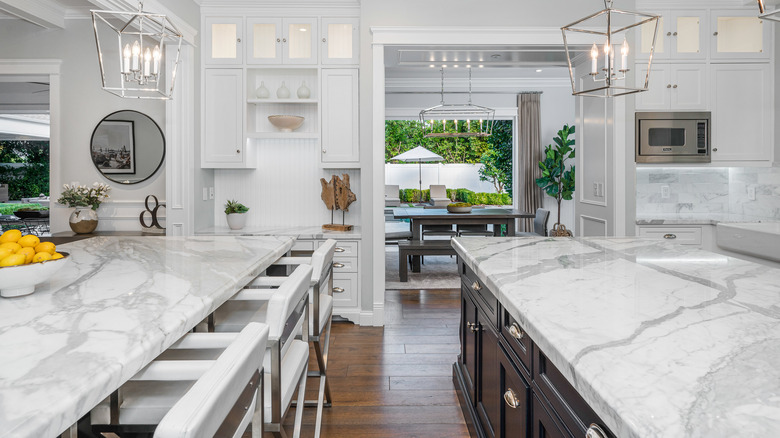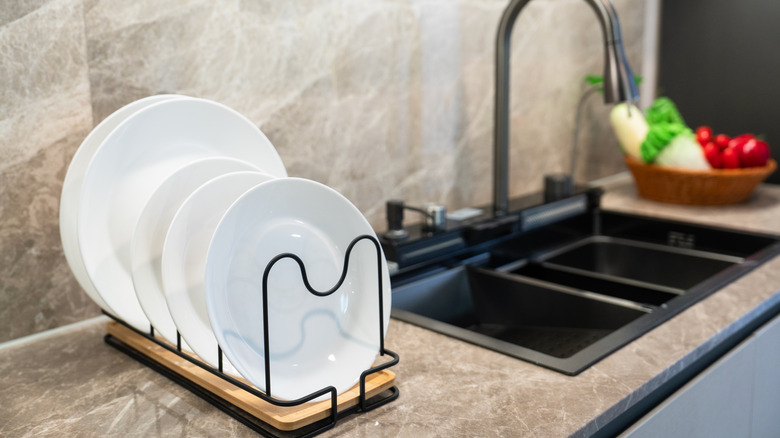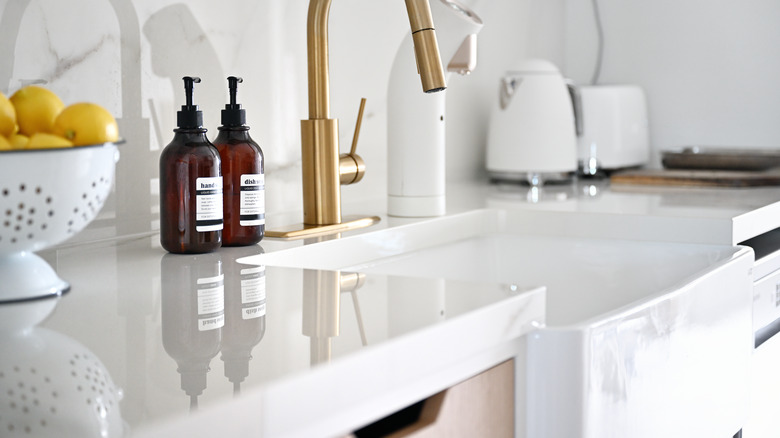The Pros & Cons Of Honed Vs. Polished Marble Countertops (And Which Is Right For You)
Installing marble countertops will upgrade the look of your kitchen and give it a timeless appeal. Because it's a natural stone, every marble countertop is unique. There are many different types and colors of marble, from very light Bianco Carrara to very dark Marquina Black. If you want more color, you can go with green, brown, blue, or yellow marble. Once you've decided what color you want, you'll need to choose a finish. Among the many finish options available, the two primary choices for countertops are honed and polished. Most of the other finishes are more suitable for floor or wall applications.
Marble is extracted from a quarry, cut and shaped, and then finished. At this point, the marble is ground down with finer and finer abrasives until the surface reaches the sheen you want. A polished finish is achieved with the finest abrasives. It's the shiniest option, and you'll recognize it by its gleam. Honed marble falls about midway between an unfinished and a polished surface. It's smooth but not glossy. The muted, honed surface is achieved when the finisher stops grinding before the surface is completely polished. Understanding how finishes are achieved and being aware of common mistakes to avoid if you have marble countertops can help you choose the right option for your lifestyle.
Pro and cons of honed marble
Honed marble has a more understated look than polished marble. The surface isn't as slippery and has a smooth, satiny finish. Because the finishers stop before the surface of the marble is completely smooth, it still has microscopic peaks and valleys. This gives rise to both the advantages and disadvantages of honed marble. From a functional standpoint, honed marble is less likely to lead to unexpected breaks and spills because it's not as slick. It won't show cuts and scratches as much as polished marble, so it will hold up better to chopping, cutting, and other typical kitchen activities.
However, its porous surface also has some disadvantages. It's more likely to stain and requires more maintenance than polished marble, particularly more frequent sealings. The average is every 6 to 12 months, but how often you should be sealing your marble countertops will depend on your situation. If the kitchen is the center of your family life, with people in and out for meals and snacks throughout the day, you may need to seal it every three months. If you live alone, rarely cook, or are meticulous in keeping your kitchen spotless, you may be able to go years between resealing.
You may want to go with honed marble countertops if you like the elegant, timeless look of marble but want a relaxed, cozy vibe. Honed marble fits in well with natural, organic decorating styles. It's also a good option if you know your kitchen is going to get a lot of daily use, but you're willing to do the maintenance on it as needed.
Pros and cons of polished marble
Polished marble is finished to a high-gloss shine, giving it a formal, high-end look. This finish makes the surface more resistant to stains, and it won't need to be resealed as often as honed marble. However, it's not a low-maintenance option. Polished marble will show scratches, cuts, and nicks more than honed marble. Because the surface is so uniform, any flaw will be more noticeable.
If you opt for polished marble over honed marble, you'll need to be more diligent on a daily basis, religiously using a cutting board and avoiding anything that can mar the surface of your countertops. Marble is among the countertop materials that are hardest to keep clean, so plan on putting in some effort to keep it looking pristine.
A polished marble countertop can fit in well with a formal design style, particularly if you have — or are planning on installing — other luxury accessories and finishes. It instantly evokes a refined feel, as polished as its glossy surface.


